Glossary of Radio Astronomy Terms
Magellanic Clouds:
Two irregular dwarf galaxies found just outside our own Milky Way galaxy. The Magellanic Clouds are visible in the skies of the southern hemisphere.
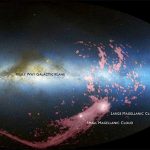
Magnetar:
A neutron star with an intense magnetic field.
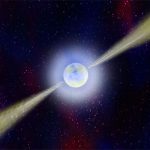
Magnetic axis:
A line that connects an objects northern and southern magnetic poles.
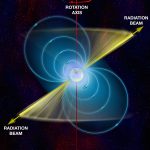
Magnetosphere:
Region around a planet in which its magnetic field dominates the effective magnetic field.
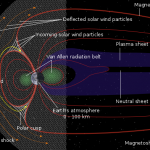
Magnitude:
The degree of brightness of a star or other object in the sky according to a scale of logarithms.
Main Sequence:
Main sequence stars fuse hydrogen atoms to form helium atoms in their cores. About 90 percent of the stars in the universe, including the sun, are main sequence stars. These stars can range from about a tenth of the mass of the sun to up to 200 times as massive. (See H-R diagram for more)
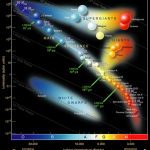
Maser:
An acronym which stands for “Microwave-amplified stimulated emission of radiation.” A maser can be used as an amplifier of radio waves (similar to a laser, which amplifies visible light). This can be a naturally occurring feature or created using special properties of certain crystals, like rubies, at temperatures near absolute zero and in strong magnetic fields. Water molecules in space can form masers that help astronomers study radio emission from objects that would normally be too faint to detect.
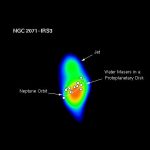
Mass:
A measure of the total amount of material in a body, defined either by the inertial properties of the body or by its gravitational influence on other bodies.
Megahertz (MHz):
Like hertz, megahertz measures the frequency of an electromagnetic wave. The frequency of one megahertz is equivalent to one million cycles per second. (See hertz for more)
Micron:
A unit of measurement, also known as a micrometer, that is equal one millionth of a meter.
Milky Way:
The galaxy that our solar system is a part of. It can be seen by the naked eye as a luminous band across the sky.
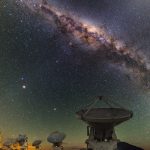
Millisecond Pulsar:
A pulsar that “flickers” every one thousandth of a second. (See Pulsar for more)
Molecular Cloud:
An interstellar gas cloud where molecular formation occurs. Over 125 different molecules from molecular clouds have now been discovered in interstellar space through radio wavelength observations.

Magnetic Field:
The medium for magnetic interactions. The field is created by magnetic dipoles and moving electric charges. It exerts a force on other electric charges and magnetic dipoles that are in the vicinity of the field. Combined with the electric field it creates the medium for the electromagnetic force, one of the four fundamental forces of nature.
Millimeter wavelength:
Millimeter-wavelength light is a sliver of the electromagnetic spectrum. The waves vary in length from about 1 to 10 millimeters (between the infrared and radio portions of the spectrum). ALMA was specifically designed to study this and shorter submillimeter-wavelength light.
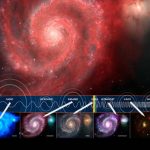
Molecular gas:
Molecular gas is the raw material of star formation. It is made up mostly of hydrogen gas (H2) yet contains various other molecules, such as carbon monoxide.







